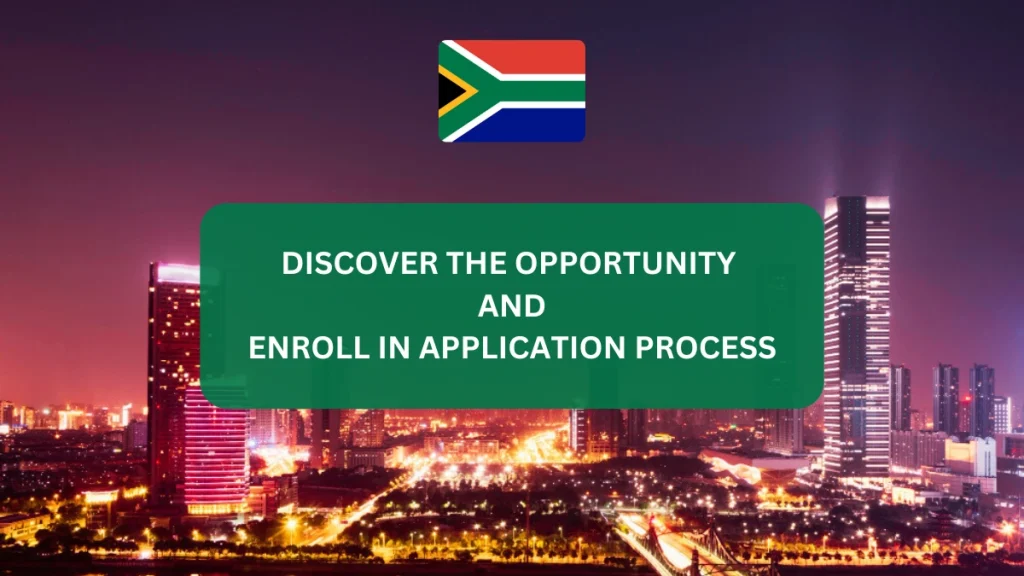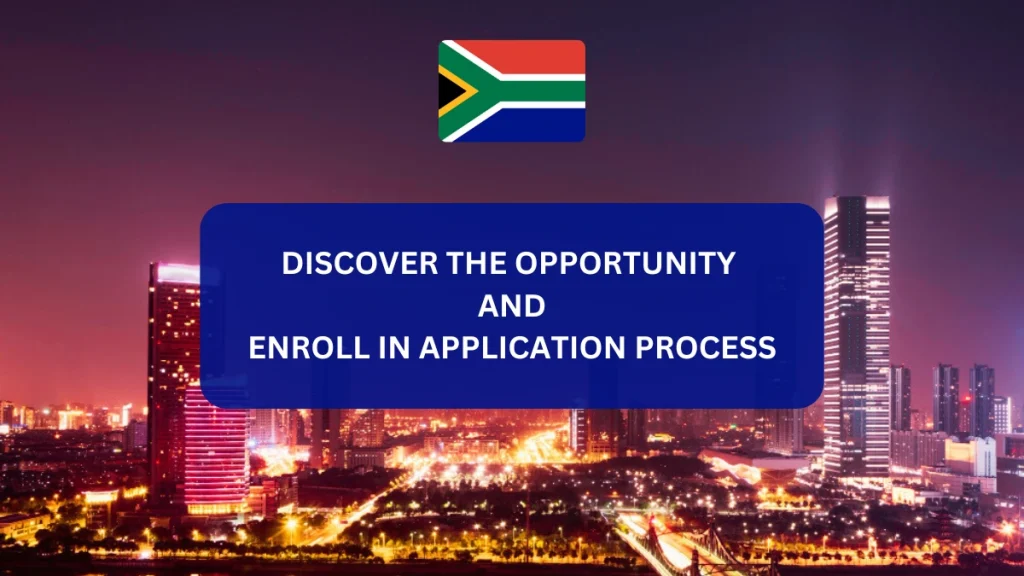Meta Description:
Discover how to apply for Learnership Programmes in South Africa for 2025. This complete step-by-step guide explains eligibility, documents needed, application tips, deadlines, and success strategies for unemployed youth.
Introduction
South Africa’s youth unemployment remains one of the country’s toughest challenges, with nearly 33% of those under 35 unemployed. For many young people, gaining practical work experience and qualifications at the same time feels out of reach.
This is where learnership programmes come in. They combine classroom training with hands-on work experience, giving unemployed youth the skills, networks, and qualifications needed to break into the job market.
With 2025 expected to bring more learnership opportunities across industries, this guide will show you exactly how to apply for learnerships in South Africa — step by step.
Understanding Learnership Programmes in South Africa
Learnerships were introduced under the Skills Development Act of 1998 to address the country’s skill shortages and unemployment crisis. These programmes remain essential in 2025, especially as the government and companies aim to close skills gaps in engineering, IT, healthcare, finance, and hospitality.
What Makes Learnerships Valuable in 2025?
- You earn a stipend while training (often around R3,000/month).
- The programme provides an NQF-accredited qualification.
- Many companies hire learners permanently after completion.
- They give access to industries even without a university degree.
What Are Learnerships and How Do They Work?
A learnership is a structured contract between:
- The learner (you)
- The employer (who provides workplace training)
- The training provider (who offers classroom theory)
- Duration: 12 to 36 months
- Format: 50% theory + 50% workplace training
- Reward: NQF qualification and real job experience
Important: Only apply for SAQA-accredited learnerships. Check legitimacy on the SAQA website.
Types of Learnerships Available in 2025
Learnerships cover all sectors of the South African economy. Below is a table highlighting the most common types in 2025:
| Sector | Example Learnerships | Relevant SETA |
|---|---|---|
| Engineering | Boiler making, electrical, welding | MERSETA (Manufacturing) |
| IT & Digital Skills | Coding, networking, data analysis | MICT SETA |
| Finance & Business | Accounting, HR, office administration | Services SETA |
| Healthcare | Nursing assistant, pharmacy support | HWSETA (Health & Welfare) |
| Hospitality & Tourism | Hotel management, professional cookery | CATHSSETA |
| Transport & Logistics | Freight handling, driver learnerships | TETA |
Benefits of Joining a Learnership in 2025
Here’s why more young people are applying for learnerships:
Useful Links:
| Benefit | Why It Matters |
|---|---|
| Earn While You Learn | Stipends cover transport, food, and personal costs. |
| Accredited Qualification | NQF-recognised, improves employability. |
| High Employability | Over 60% of learners secure jobs after completing programmes. |
| BEE Opportunities | Companies prefer hiring learnership graduates as part of transformation goals. |
| Career Pathway | Opens doors for promotions or further study opportunities. |
Eligibility Criteria for Learnerships 2025
To check if you qualify, here are the general requirements:
| Requirement | Details |
|---|---|
| Age | 18 – 35 years old |
| Citizenship | South African ID required |
| Education Level | Grade 12/Matric (some accept Grade 10) |
| Skills | Maths & Science preferred for technical roles |
| Record | No criminal record |
Special Considerations
Government encourages applications from:
- Women
- People with disabilities
- Rural and disadvantaged youth
Essential Documents to Prepare
Prepare these before applying:
| Document | Purpose |
|---|---|
| Certified ID Copy | Confirms citizenship |
| Certified Matric Certificate | Verifies education qualification |
| CV (Curriculum Vitae) | Outlines skills, experience, and education |
| Proof of Address | Required for application forms |
| Motivation Letter | Explains why you want the learnership |
Tip: Keep all documents scanned in PDF format for online applications.
Step-by-Step Application Process for 2025
Here’s the roadmap to applying successfully:
Step 1: Research Opportunities
- Visit LEARNERSHIPS PORTAL HERE
- Search on job portals: SSETA, Careers24, PNet, Indeed, LinkedIn.
- Check government portals: DHET, NYDA.
Step 2: Prepare Your Application
- Update your CV with volunteer work or short courses.
- Write a personalised motivation letter for each application.
- Ensure all documents are certified and up to date.
Step 3: Submit Your Application
- Most applications are online. Upload required documents.
- Some companies accept email or physical applications.
Step 4: Follow Up
- Wait 7–10 days before sending a polite follow-up email.
- Stay professional — it shows seriousness.

Application Timeline for 2025
| Period | What Happens |
|---|---|
| July – October 2024 | Main learnership applications open |
| November – December 2024 | Shortlisting & interviews |
| January – February 2025 | Learnership programmes officially start |
Tip: Apply early. Deadlines are strict and late submissions are not considered.
Tips for a Successful Learnership Application
Build a Strong Profile
- Add volunteer work or community service.
- Take free online courses (Alison, Coursera, FutureLearn).
- Create a LinkedIn profile showcasing your goals.
Avoid Common Mistakes
- Don’t submit incomplete applications.
- Avoid generic motivation letters.
- Double-check spelling and grammar.
- Never apply late.
Prepare for Interviews
- Expect skills tests and panel interviews.
- Practice common questions like “Tell us about yourself.”
- Dress appropriately (even for online interviews).
- Research the company beforehand.
After Applying: What to Expect
Selection Process
- Applications are screened and shortlisted.
- Shortlisted candidates are invited for interviews/assessments.
- Employers then select learners for final placement.
If You’re Not Selected
- Apply again for the next cycle.
- Consider apprenticeships or internships.
- Take short online courses to boost your skills.
- Ask for feedback and improve your CV.
Onboarding and Starting Your Learnership
Once selected:
- Sign the learnership contract.
- Attend orientation and induction.
- Meet your mentor and workplace supervisor.
- Track your progress with logbooks.
Success comes from showing commitment, teamwork, and eagerness to learn.
Conclusion
Learnership Programmes in South Africa 2025 are life-changing opportunities for unemployed youth. They provide qualifications, work experience, and financial support — a real chance to break the cycle of unemployment.
To succeed:
- Research available opportunities.
- Prepare the right documents.
- Apply early and avoid common mistakes.
- Stay persistent even if you’re not selected the first time.
By following this step-by-step guide, you’ll position yourself ahead of thousands of other applicants.
Now is the time to act — visit SETA, DHET, and NYDA websites today and apply for the learnership programme that fits your career goals.
Would you like me to also create a downloadable table-based checklist (PDF/Excel) with requirements, documents, and deadlines for learners to use when applying? That could make this guide even more practical and engaging for your audience.


